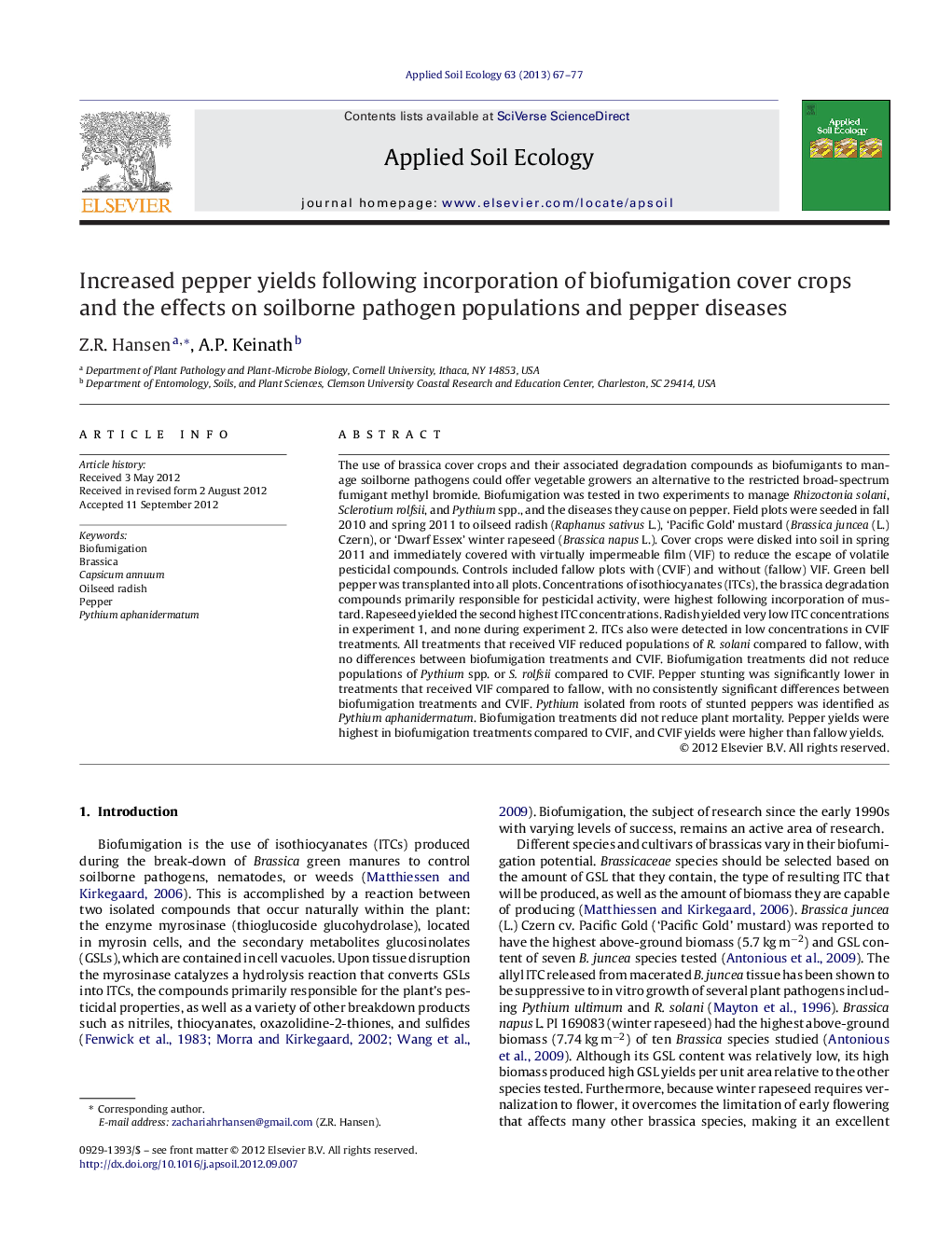| Article ID | Journal | Published Year | Pages | File Type |
|---|---|---|---|---|
| 4382534 | Applied Soil Ecology | 2013 | 11 Pages |
The use of brassica cover crops and their associated degradation compounds as biofumigants to manage soilborne pathogens could offer vegetable growers an alternative to the restricted broad-spectrum fumigant methyl bromide. Biofumigation was tested in two experiments to manage Rhizoctonia solani, Sclerotium rolfsii, and Pythium spp., and the diseases they cause on pepper. Field plots were seeded in fall 2010 and spring 2011 to oilseed radish (Raphanus sativus L.), ‘Pacific Gold’ mustard (Brassica juncea (L.) Czern), or ‘Dwarf Essex’ winter rapeseed (Brassica napus L.). Cover crops were disked into soil in spring 2011 and immediately covered with virtually impermeable film (VIF) to reduce the escape of volatile pesticidal compounds. Controls included fallow plots with (CVIF) and without (fallow) VIF. Green bell pepper was transplanted into all plots. Concentrations of isothiocyanates (ITCs), the brassica degradation compounds primarily responsible for pesticidal activity, were highest following incorporation of mustard. Rapeseed yielded the second highest ITC concentrations. Radish yielded very low ITC concentrations in experiment 1, and none during experiment 2. ITCs also were detected in low concentrations in CVIF treatments. All treatments that received VIF reduced populations of R. solani compared to fallow, with no differences between biofumigation treatments and CVIF. Biofumigation treatments did not reduce populations of Pythium spp. or S. rolfsii compared to CVIF. Pepper stunting was significantly lower in treatments that received VIF compared to fallow, with no consistently significant differences between biofumigation treatments and CVIF. Pythium isolated from roots of stunted peppers was identified as Pythium aphanidermatum. Biofumigation treatments did not reduce plant mortality. Pepper yields were highest in biofumigation treatments compared to CVIF, and CVIF yields were higher than fallow yields.
► Soil isothiocyanate (ITC) concentrations were highest following mustard and rapeseed amendments. ► All mulch treatments reduced Rhizoctonia solani soil populations and pepper stunting. ► Biofumigation did not affect R. solani, Sclerotium rolfsii, or Pythium spp. populations. ► Pepper yield was higher in biofumigation treatments compared to mulched fallow.
